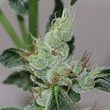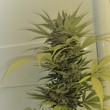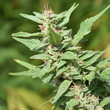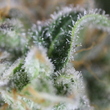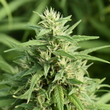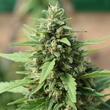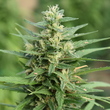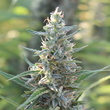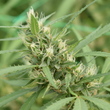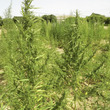Introducción
Traditionally, the analysis of Cannabis sativa L. samples has been carried out through chromatographic techniques, namely gas chromatography (GC) coupled to flame ionization detection or mass spectrometry, or liquid chromatography mass spectrometry (MS). Although these techniques provide highly selective and reliable results in terms of identification, in-field measurements are not possible and sample pretreatment is inevitable, leading to time-consuming procedures. In this context, ion mobility spectrometry (IMS) has risen as a very promising technique due to its multiple advantages, e.g. simplicity and portability, among others. Herein, a fast and sensible procedure for the obtention of the spectral fingerprint of Cannabis herbal samples was developed via thermal-desorption (TD)-IMS.
Materiales y métodos
A total of 33 Cannabis samples were used, 11 of them being part of the medicinal varieties registered by Phytoplant at CPVO, namely: Theresa, Pilar, Aida, Sara, Juani, Octavia, Mati, Moniek, Divina, Beatriz and Magda. The remaining samples were taken from plants of genotypes and hybrids and plants of modern industry hemp varieties. These plants were cultivated in various locations and samples were collected from the top at the optimal harvest point. Apart from TD-IMS, GC-MS was used to establish Cannabis chemotypes based on their psychoactivity and the major cannabinoids groups present in the plants. Furthermore, to assess the potential of TD-IMS, principal component analysis (PCA)-linear discriminant analysis (LDA) was performed.
Resultados
TD-IMS provided spectra of the different Cannabis chemotypes, both in the positive and negative ionization modes, however, it was difficult to distinguish them only by visual inspection of the spectra. To solve this, PCA-LDA was performed, thus being able to group the extracts in different clusters according to the previously defined chemotypes, as well as their psychoactivity and major cannabinoids groups, in both ionization modes. On the other hand, in order to evaluate potential false positive results, non-Cannabis plants were also analyzed and clustered in a different group, therefore demonstrating the potential of the developed methodology for Cannabis discrimination. Additionally, the direct measurement of the plant material was also performed, obtaining separated groups according to the pre-established chemotypes. To study the potential of this approach for drug control, the residues of plants on the fingers of the analysts after being in contact with Cannabis plants were measured as well, obtaining similar characteristic signals to those for plant extracts, with some slight shifts and higher intensity in the positive mode, and more complex spectra in the negative mode (which could be indicating the potential detection of other polar phytochemicals).
Conclusión
In this work, the potential of the TD-IMS for the detection of cannabinoids and discrimination of Cannabis chemotypes was demonstrated. This approach enables the possibility of on-site measurements, thus enhancing the versatility of the technique while providing rapid results. Furthermore, since non-Cannabis plants and tobacco were clustered in a different group to those of Cannabis, drug control as well as Cannabis discrimination is also possible.
Otras publicaciones
Ver más
Ver más
Ver más
Ver más
Ver más
Ver más
Ver más
Ver más
Ver más
Ver más
Ver más
Ver más
Ver más
Ver más
Ver más
Ver más
Ver más
Ver más
Ver más
Ver más
Ver más
Ver más
Ver más
Solicita información
¿Te podemos ser de ayuda? ¿Tienes alguna duda sobre nosotros? Escríbenos y contactaremos contigo cuanto antes.
